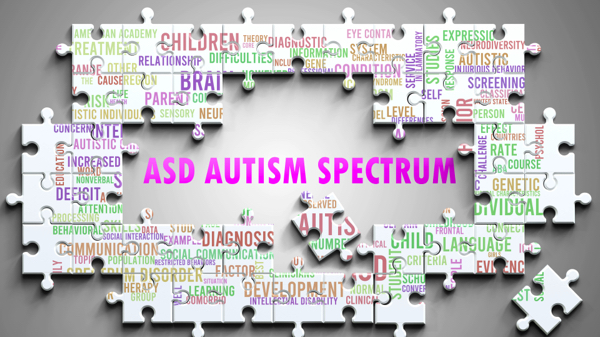
- A major review identified 28 evidence-based practices (EBPs) that effectively support children, teens and young adults with autism.
- The strategies span a variety of approaches, including behavioral techniques, communication tools, sensory supports, social skill development and technology-based interventions.
- These EBPs offer real-world solutions for parents and caregivers, helping to reduce challenging behaviors, improve communications and promote independence for individuals with autism.
- This study emphasizes evidence-based methods, with a focus on strategies that have been proven effective through rigorous research, making them reliable options for practitioners and families.
- The research offers hope to families by providing clear, actionable strategies that can make a positive difference in the lives of autistic youth, offering a sense of empowerment for parents facing challenges.
The 28 proven strategies – what they are and what they do
Here's a family-friendly guide organized by how these 28 proven strategies help in real life:Helping with behavior
- Antecedent-based interventions (ABIs): Set the stage for good behavior. This approach makes changes in the environment or activity before a behavior happens, so positive actions are more likely to occur. For example, giving your child a visual schedule can help them feel more in control and less anxious.
- Differential reinforcement (DR): Reward good behaviors and ignore less desirable ones. By focusing on reinforcing positive actions, this approach helps reduce behaviors like aggression or tantrums.
- Extinction. Help reduce problem behaviors by stopping rewards (like attention) that encourage them. It's effective but needs to be used carefully to avoid emotional reactions.
- Functional behavior assessment (FBA): Understand why certain behaviors are happening so you can choose the best way to help. It's like figuring out the root cause to find the right solution.
- Response interruption and redirection (RIR): Stop an inappropriate behavior by gently interrupting it and guiding the child toward a more positive action.
- Reinforcement: Reward your child for doing the right thing to encourage them to do it again.
- Self-management: Teach your child to recognize and control their own behavior. This helps build confidence and independence.
Helping with communication
- Augmentative and alternative communication (AAC): Give your child a way to communicate without speaking. This can include tools like picture boards, sign language or speech-generating devices.
- Functional communication training (FCT): Instead of using challenging behaviors (like tantrums) to express needs, teach your child more appropriate ways to ask for what they want, like saying "help" or pointing to a picture.
- Picture exchange communication system (PECS): Help your child communicate using pictures, especially before they can speak. This system teaches them how to ask for things they need.
- Social skills training: Teach your child how to interact with others, whether it's starting a conversation, sharing or reading social cues. These lessons give them the tools to build better social relationships.
- Video modeling: Show your child how to do something by having them watch a video of someone else performing the task. This method works for everything from starting a conversation to learning life skills (like brushing teeth, tying shoelaces, etc.)
Helping with learning and skill development
- Direct instruction (DI): This structured approach breaks down skills into small, manageable steps. Your child gets clear instructions, practice and feedback, making it easier to learn new skills.
- Discreet trial training (DTT): A one-on-one method that uses clear instructions and positive reinforcement to build skills, one step at a time.
- Task analysis: Break big tasks (like buttoning shirts or handwashing, etc.) into smaller steps so your child can learn each one individually. It makes complex tasks feel more manageable.
- Technology-aided instruction and intervention (TAII): Use technology like apps, educational software or devices to support learning. These tools can be especially helpful for children with autism, giving them extra practice in a fun, engaging way.
- Time delay: Give your child a few moments to respond to a task before offering help. This encourages them to think and act independently.
Helping with social skills and interaction
- Peer-mediated instruction and intervention (PMII): Teach other kids how to interact with and support children with autism. This promotes friendships and inclusion.
- Modeling: Show your child how to act or speak by demonstrating the desired behavior. Kids learn best by watching and copying others.
- Scripting: Provide your child with specific phrases or steps to follow in common social situations. It's like giving them a script to help them navigate social scenarios.
- Social narratives: Use short, personalized stories to explain social situations. These stories help children understand what to expect and how to act.
- Structured play groups (SPGs): Organize play sessions where children can practice interacting, sharing and communicating with peers in a structured setting.
Helping with emotional and behavioral regulation
- Behavioral momentum intervention (BMI): Build confidence by starting with easy tasks and then gradually introducing more challenging ones. This strategy boosts motivation and success.
- Cognitive behavioral/instructional strategies (CBIS): Teach your child to recognize their own thoughts and emotions. This helps improve behavior and self-awareness.
- Naturalistic intervention (NI): Use everyday activities and your child's natural environment to teach skills. Whether it's practicing turn-taking during a game or using their interests to motivate them, this strategy makes learning more meaningful.
Helping with daily routines
- Exercise and movement (EXM): Physical activity helps improve focus, mood and motor skills. A little movement can go a long way in improving attention and behavior.
- Parent-implemented intervention (PII): Train parents to use these strategies during everyday activities. Children often learn best from the people they are closest to, so this approach integrates learning into daily life.
- Prompting: Use gentle cues (like a nudge or verbal reminder) to guide your child through tasks. Over time, you can reduce the prompts as they become more independent.
Why this study matters: Real strategies, real impact
These 28 strategies can be tailored to your child's unique needs and used at home, in the classroom or during therapy. When families, teachers and professionals work together using these evidence-based tools, autistic kids, teens and young adults can grow in confidence, communicate more clearly, manage their anxiety, connect socially and more importantly, feel seen, heard and supported. For families, these practices aren't just helpful – they're empowering. Used consistently and thoughtfully, they can foster independence in daily routines, ease social challenges, reduce meltdowns, boost coping skills and support communication for nonverbal and minimally verbal children. Best of all, they put real tools into parents' hands – tools that work. Visit Mind.news for more similar stories. Learn more about visual and video modelling for autistic children by watching this video. This video is from the Daily Videos channel on Brighteon.com.More related stories:
Mindfulness for autism: Science supports this new path to well-being for people with autism and their families. Yoga and autism: A science-backed look at how a simple practice is transforming behavior and movement in children with ASD. MUSIC over MEDS: Comprehensive study will examine benefits of music as a natural healing force.Sources include:
PMC.NCBI.NLM.NIH.gov IRIS.Peabody.Vanderbilt.edu Brighteon.comAntioxidants: A promising ally in the battle against cancer
By Belle Carter // Share
Science reveals how cow urine and DMSO could transform breast cancer treatment
By Olivia Cook // Share
Enhance the flavor, texture and nutritional benefits of your smoothies with superfood powders
By HRS Editors // Share
Bay leaves: The unsung superfood with centuries of flavor and health benefits
By Ava Grace // Share
Understanding AUTISM as a SPECTRUM: A guide for parents and families
By Olivia Cook // Share
Google betrays privacy promises by abandoning third-party cookie phaseout
By isabelle // Share
Antioxidants: A promising ally in the battle against cancer
By bellecarter // Share
Illegal immigrant arrested after stealing DHS Secretary’s purse in D.C. dining theft
By isabelle // Share










